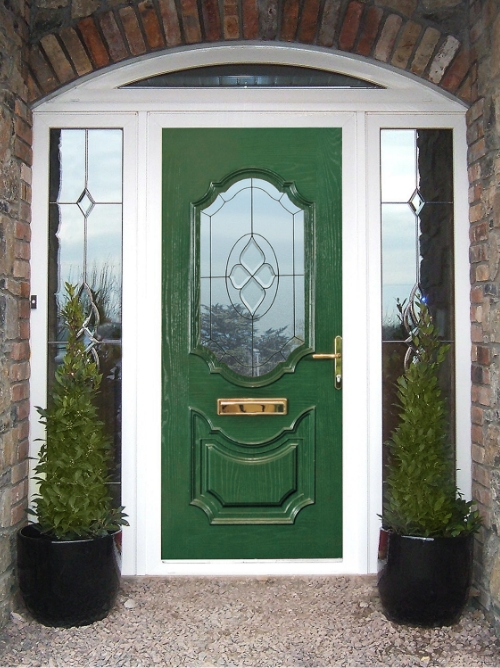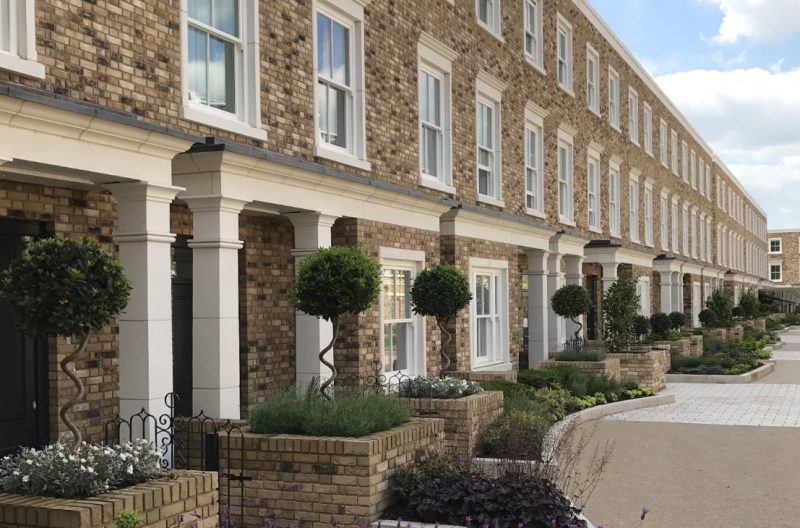If you regularly follow our news articles here at Glassier, you may have noticed a recent one where we predicted the likely home improvement trends for 2024. We listed several ideas, but our top choice for the calendar year was composite doors. At the time of writing, it’s far too early to say if we were right or not, but it did trigger a small amount of feedback. We’ve had nobody openly disagreeing with us, but it did raise more than one email titled ‘what are composite doors?’
In hindsight, we can understand why. We spent a large amount of that news post explaining the benefits of composite doors but didn’t explicitly go into the difference between them and regular front doors. Unless you work in the home improvement industry, it’s entirely reasonable that you wouldn’t know what a composite door is. We’re not changing our predictions and we’re still confident that 2024 will be the year of the composite door, but we thought we should explain them in greater detail.
A Detailed Look At Composite Doors

Q: What is a composite door made out of? A: Solid timber and reinforced plastic or uPVC.
We’ll start by answering a key question; what is a composite door made of? As the name suggests, they consist of multiple materials. The standard composite door contains a thick core consisting of solid timber or foam (we use the former) and this is surrounded by several compressed layers made of materials like Glass-Reinforced Plastic or uPVC.
This is a marked difference from other types of front doors which usually consist of a single material. In the UK, the most commonly used are uPVC, timber or aluminium and they all have their benefits and drawbacks.
Single-material doors have been used for centuries but composite doors are the new kids on the block; the first ones appeared on the market in 1996. That might sound like a long time ago but it’s comparatively recent in home improvement terms (even if it does pre-date Tony Blair becoming Prime Minister).
Why Install A Composite Door?

Q: Why install a composite door? A: Composite doors are secure, durable and energy efficient.
Okay, so that’s what a composite door is, but what advantages do they have? Firstly, they’re the most secure doors that money can buy. All those composite door materials work together to make them inherently tough and durable, so they’ll generally withstand even the most determined attempts at forced entry.
Composite doors tend to be more robust than their single-material cousins and as an example, ours are 17% thicker than the average wooden door. They’re dense, solid, and will withstand direct impacts from unwanted intruders.
Aside from that, composite doors are also renowned for their energy efficiency. Weatherproof seals eliminate draughts and the thick profiles are perfect for preventing household heat from escaping. When it comes to heat retention, composite doors consistently outperform uPVC, aluminium and wood and they are the perfect choice for keeping things cosy. As an added bonus, all those layers help to prevent water ingress, so you can rely on your house staying dry even during the most severe downpours.
Design Your Own Composite Door

Q: Can I design my own composite door? A: Yes!
Composite doors are a great choice for improving thermal efficiency and home security, but that’s not all. On a slightly more superficial note, they’re incredibly attractive. The first composite doors had somewhat limited designs, but we’re pleased to say that’s no longer the case. In the three decades since composite doors were introduced, their designers have let their imaginations run wild and they’re now highly versatile.
It’s now more than possible to create a composite door for any type of property. We have a wide variety of colours, finishes and styles available, along with an impressive selection of hardware and glazing. Whether you live in a thoroughly modern new build in a sophisticated urban area, or a traditional farmhouse in a quiet part of the country, you can get a composite door that’s perfect for you.
You could even order a composite door with a woodgrain finish that’s so convincing, that your visitors will think it’s made of real timber. You’ll get all the inherent charm and character of a classic wooden door but with none of the unpleasant side effects such as rot or mould.
With all this in mind, it should be obvious why we think that composite doors will be a big hit in 2024. They’ve been getting increasingly popular in the last few years and more people are asking about them than ever. Homeowners love the versatile designs, the reduced heating bills and the greater feeling of security, so why not join them? If you’d like to join the growing trend for composite doors, why not get started on a project with us? You can test the waters by getting a free, no-obligation online quote or you can contact us. Get in touch and let’s see what we can create together.






